
Types Of Madeira Wine
The different tastes are either indicated by the above mentioned grape varieties or by levels of sweetness. Dry or seco indicates a dry taste in the fashion of Sercial. Medium dry or meio seco labels a mild taste like the Verdelho style. A taste like Bual is indicated with medium sweet or meio doce. The sweetest taste like Malmsey is named sweet or doce. You have to remember though, that the absence of a grape name usually indicates a lower quality wine made of Tinta Negra Mole.
As demonstrated in the chapter about the making of Madeira, most of the wine is blended. Therefore a three year old Madeira will only say that the youngest wine in this blend has an age of three years. Some by far older wines might be in it as well, to rounden the taste. In a solera the given year indicates the starting year of the solera. Only vintage Madeira and the new types like Colheita and Harvest will contain wine from one single year.
BLENDS
Rainwater
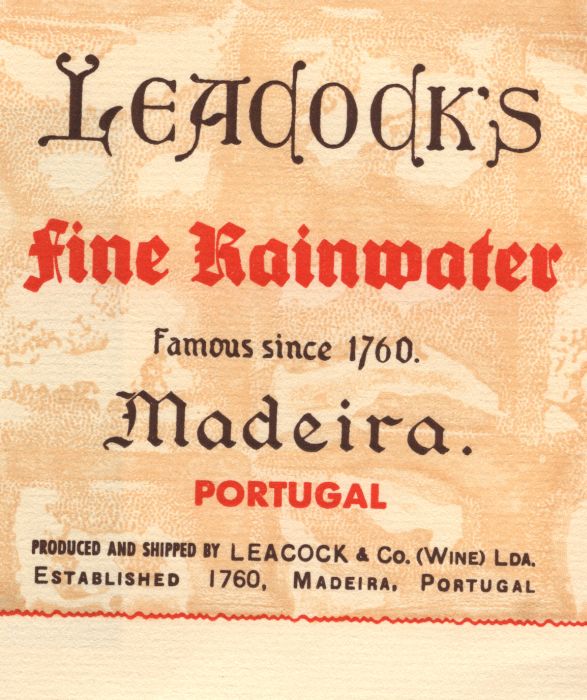
Rainwater of Leacock’s
A bright and mild blend, said to taste like Verdelho. The main part is made from Tinta, the youngest wine in this blend is at least three years old. Rainwater is quite popular in the US as an aperitif.
Three-Years-Old Reserve = Finest/Choice/Selected
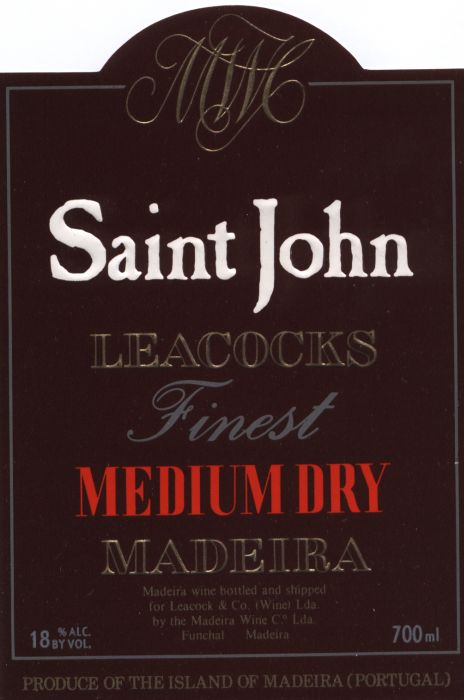
3YO of Leacock’s
This blend is normally made from Tinta. Thus a grape variety is not mentioned on the label. Instead you will find misleading words like Finest, Choice or Selected. The youngest wine in this blend is at least three years old.
Five-Years-Old Reserve
This is where most of the producers start with the Castas Nobres. According to European Community regulations 15% can be of Tinta, the rest of the blend has to be from the named grape variety, the youngest wine being at least five years old. In 2003 I saw a five year old blend by J. Faria & Filhos Lda., being sold with a bottling year on the bottle. This is misleading of course, since it is just a five year old blend and not to be confused with a vintage year.
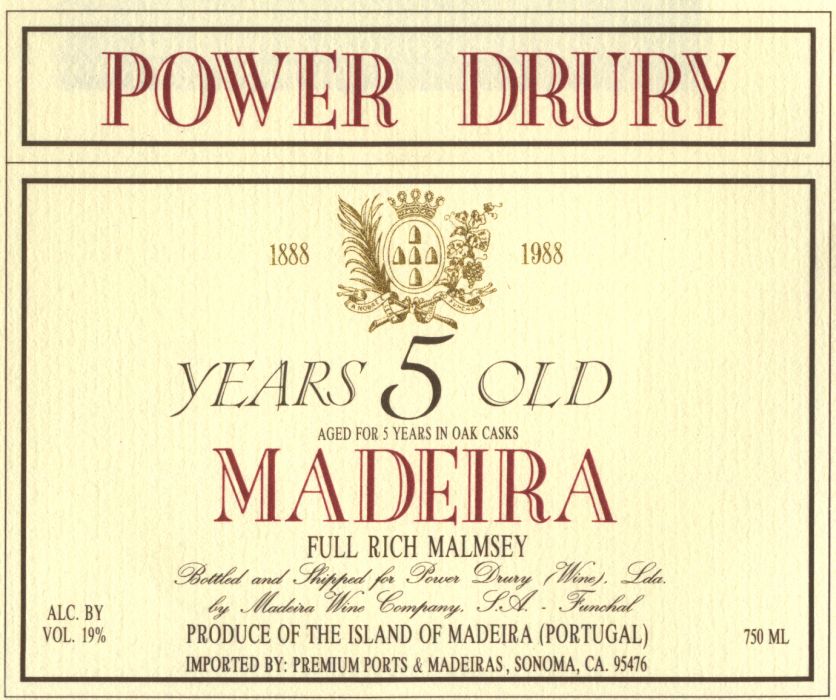
5YO of Power Drury
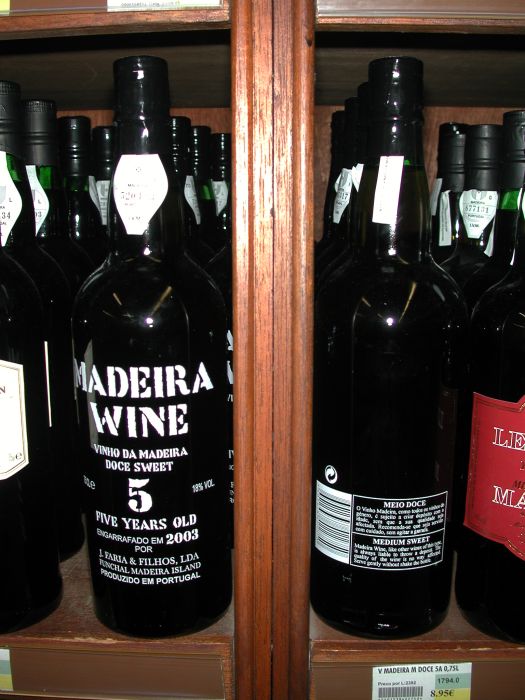
5YO of J. Faria & Filhos Lda.
Alvada
Alvada is a new creation of the Madeira Wine Company, sold under the Blandy’s label. It is a five year old blend of Malmsey and Boal and comes in a quite shockingly modern labeled bottle. The bottle size is 0.5 liters.
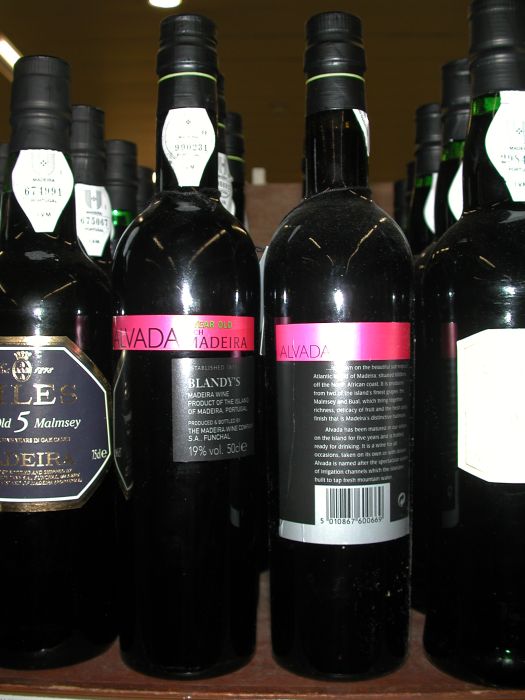
MWC’s Alvada
Ten-Years-Old Reserve = Special Reserve = Reserva Velha
Names a blend with the youngest wine being at least ten years old.
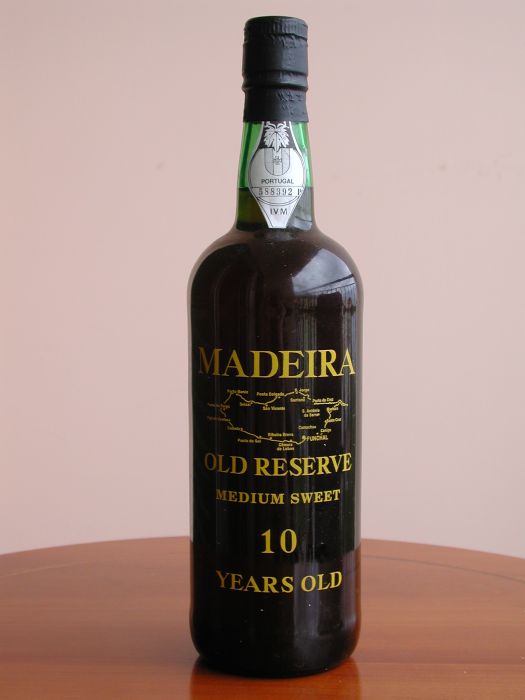
Adega de Torreao 10YO
Fifteen-Years-Old Reserve = Extra Reserve
A fifteen year old blend was not allowed by the original regulations. Nevertheless some producers make one anyway, sometimes for special occasions. The 15YO extra reserves by the Madeira Wine Company as an example celebrate the Portuguese discoveries or the bicentennial of the United States.
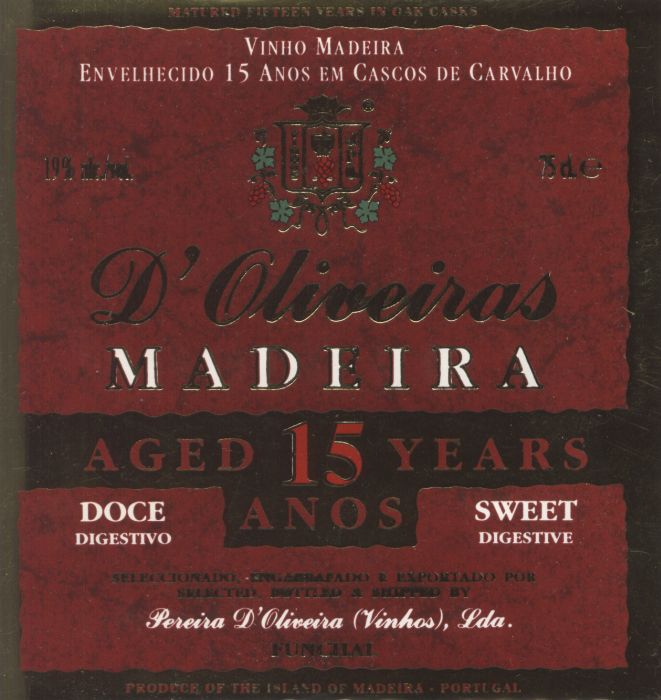
15 YO of D’Oliveiras
Twenty-Years-Old Reserve
The twenty year old blend was also not allowed by the original regulations. But these regulations got watered down to some degree so you can also sometimes find a blended wine with the youngest wine being twenty years old.
Thirty-Years-Old-Reserve
To my knowledge only Vinhos Barbeito currently (2008) have a thirty year old Malvasia blend, a wine that shows the long cask ageing in its concentration.
Multi-grape Blends
As in the Alvada wine of the MWC other producers have experimented with blends of different grape varieties as well. But this time not because the harvest was to small to mature the different grape varieties seperately as with D'Olivieras "Old Wine" vintages, but to create interesting blends that combine the best of both worlds. Especially Vinhos Barbeito have created some very interesting blends, like the VB blends (Verdelho and Boal) for an example. I think that this is one of the future trends of Madeira wine.
WINES WITH A YEAR ON THE BOTTLE
Solera
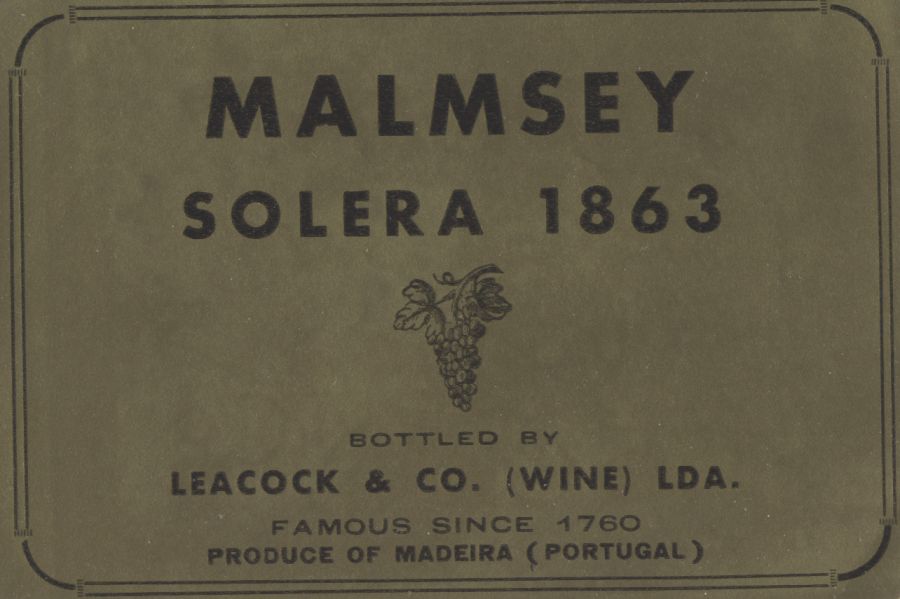
Malmsey 1863 Solera of Leacock’s
In this type of wine you will find a solera system with some parallels to the making of Sherry or Malaga. The production of the early soleras went as follows: You take a tenth of the contents of a cask and replace it with the same amount of a younger wine. You can repeat this another nine times, until you changed the whole cask volume once. The solera will then be closed and still contains about 1/3rd of the original starter wine. Since a solera, operated in this fashion, can produce only little amounts of wine, many producers more and more turned to a solera system like in the Sherry region, where you can produce much more wine since you are allowed to refill younger wine as many times as you like. Modern soleras therefore do sometimes not seem to be as good as the old ones used to be.
Solera Madeira still is something special. The eleven (or less, or more) different wines harmonize over the years and give a good mixture of the depth of old wines with some freshness of the younger wines. The year named on the bottle indicates the starting date of a solera. When you buy a solera 1852 only a small part of the bottle will be wine from the year 1852 but the other wines are of high age too. It has to be mentioned though, that solera wines are not allowed by the EU regulations, but you can still buy them on the island. Some buyers think it comes close to fraud when they buy a bottle with a date on it, just to find out later, that only part of the wine inside was harvested in that specific year. But once you have tasted a complex old Solera Madeira you will understand the benefit of this procedure that was originally adopted out of the simple need to enhance the quality of the wine after the two great plagues of Oidium and Phylloxera.
Vintage = Frasqueira
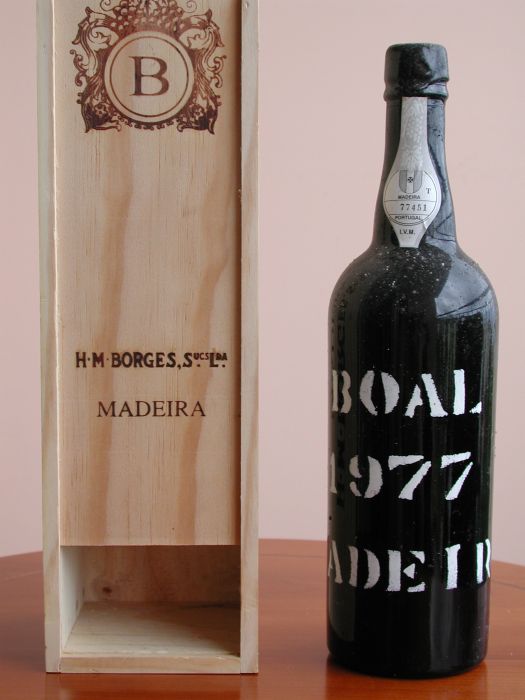
Boal 1977 of H. M. Borges Sucrs. Lda.
The top of Madeira wines is the vintage wine, also called Frasqueira. Wine of one grape variety and of one year is kept in cask for a minimum of twenty years and then for another two years in bottle. However these are just the minimum regulations and most of the companies will skip the two years in bottle anyway. Most of the vintages will be in cask for much longer, sometimes over a century. The decision if a certain wine becomes a vintage is not made at the beginning. Usually it will have to spend at least ten years in cask to prove its quality, before it is declared as a vintage and kept in cask for more time to come. If the wine fails it will go into one of the many blends. The long storage in cask leads to a maximum oxidation and concentration of the wine. It also increases the level of alcohol in the wine, since the wood of the cask is more permeable to water than alcohol. A vintage Madeira therefore offers a unique tasting experience combined with strength. Vintages are very durable; a good vintage is able to live for centuries. On the island, but also from private collectors or on auctions you can find vintages dating back into the 18th century. In catalogues you can find wines from 1789 and the famous 1795 Terrantez from Barbeitos. Even of the so-called 1792 Napoleon vintage - the wine that according to a popular fable Napoleon took with him into exile - there are some bottles still available. Bottles like these have its price of course, vintages of the 18th century are sold for much more than a thousand dollars and will probably rise even more.
Harvest/Single Harvest = Vintage With about 5 to 10 Years In Cask
The Madeira Wine Company also started this new type of vintage wine. A wine that spent a time of about 5 to 10 years in cask can be released on the market as a “Harvest” wine. In contrast to the Colheita wines which could eventually become Frasqueira vintages, these Harvest vintages are not likely to be stored on for becoming an old vintage wine. The wines used for Harvest Madeira wine are less powerful and I doubt if they really had the potential to survive for a long time. Nevertheless they offer some glimpse at the real vintage madeiras and have much more individuality than the blended wines. Harvest wines are now widely available from many producers and today (2008) are sold as "Single Harvest" wines, sometimes barely reaching 5 years of cask age.
Colheita = Vintage With About 6 to 10 Years In Cask (Originally 12 to 18 Years)
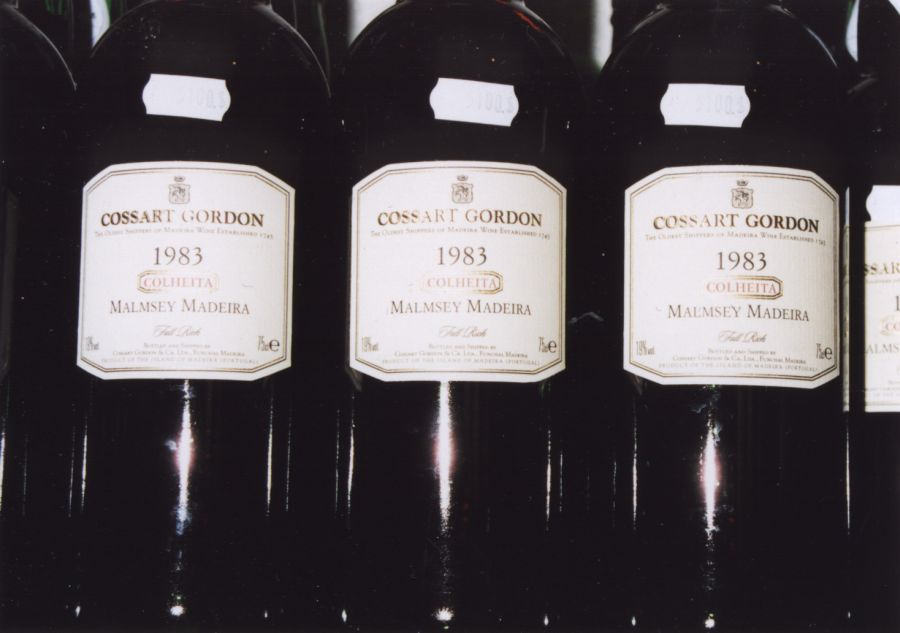
Colheitas of the MWC
The classic vintage Madeira must spend at least twenty years in cask. A gap in regulations however allows the producers to make a vintage with less then twenty years of maturation in cask. Those wines also bear a year on the bottle but are far from being a vintage Madeira. They are good wines with much more individuality than a blend, but some of them lack the concentration of a real vintage. Most of the producers produce these wines called Colheitas. The originally intended cask period of 12 to 18 years has come down to as low as 6 years in the latest regulations. I guess that the high demand for this new type of wine has put to much pressure on the producers. The price range is roughly between the 10 year old and 15 year old blends. A wine that had been matured as a single vintage in cask can be declared a Colheita wine. If not all the wine is bottled as Colheita, the same wine could return some years later as a classic Frasqueira vintage wine. This sounds illogical? The wine will become more concentrated during its prolonged time in cask and this will eventually lead to such an improvement that the wine will be declared as a vintage. Of course not every wine that has been stored for more than 20 years eventuallly becomes a Frasqueira wine. Many old wines are also needed to back up the blends. In general the style of the Colheita wines has improved significantly since the first steps in the late 1990ies. Also since 2000 more and more Colheita wines have been made from Tinta Negra Mole. This enabled the companies to produce higher amounts of wine, freed grapes of the "noble varieties" for blends and Frasqueiras and also reduced production costs.
Single Cask Madeiras/Single Vineyard Madeiras
In the last years a few single vineyard Madeira colheitas have appeared on the market, especially from Vinhos Barbeito, but also the MWC offers at least one single vineyard wine. Barbeito also offers a Tinta Negra Mole colheita wine from a single vineyard. I am not sure whether this is really a trend with a bright future ahead, since most of the vineyards are to small to produce significant quantities of a single vineyard bottling. The single cask wines however should be interesting to taste since they should develop different characteristics. This could be a good way to get Madeira wines with more individuality without having to pay for an expensive Frasqueira wine.
Vinho Da Roda Or Vinho Da Torno Or Vinho Da Volta
These wines that were taken aboard a ship to cross the equator are no longer produced. Shortridge Lawton was one of the last, if not the last company to mature its wines in this way. In the 1960ies and 1970ies a little wine was transported aboard a modern container ship to make some wine in the old way again. I have never tasted it, but the bottles are rather expensive. Some rare bottles of wines like these can still be found from time to time.
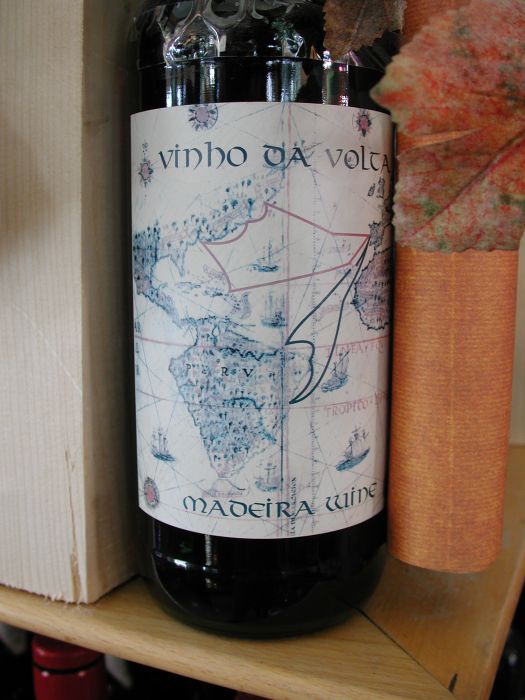
Vinho da Volta
OTHER WINES
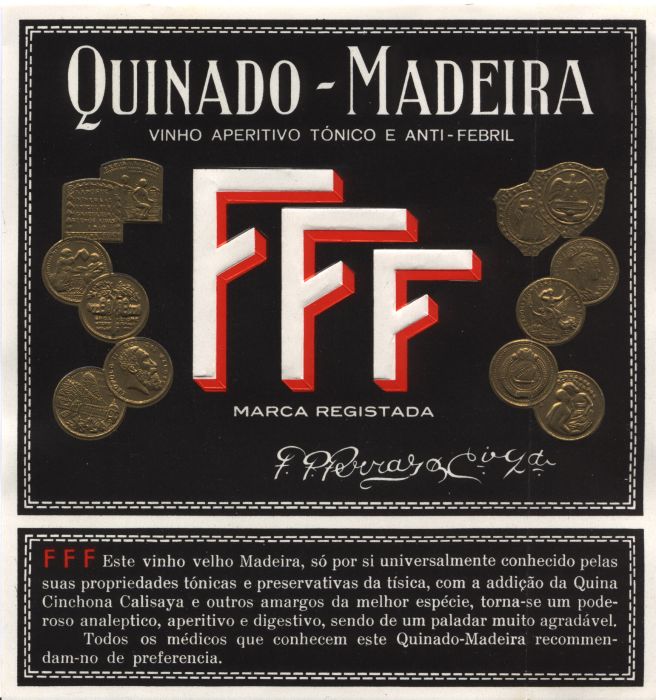
Vinho Quinado of F. F. Ferraz
In the high times of Madeira, shippers produced a number of curious wine-varieties. For tropical destinations, quinine was added to the wine, to use it as a medicine against tropical fevers especially Malaria. F. F. Ferraz traded this wine under the name Vinho Quinado.
Another popular variety was the so-called White Madeira. The wine had been run through a charcoal filtering system so that most of its color (and taste) had been removed. The result, as an example traded by Gibbs & Co., was said to be light and elegant. Those varieties are no longer produced.
Forged Madeira wine, produced in times when the demand for Madeira was high, is also no longer marketed. The Canary islands, Australia and California were producers of forged Madeira. Also in Spain some of the big Sherry Companies (like Domecq, Byass and others) bottled false Madeira wine. Especially on the Canary Islands there is still a lot of Malvasia being produced today, but of course these wines are not labeled as Madeiras as this is forbidden by EU regulations. In fact these wines aren't even fortified and they have their own "Denomination de Origin".
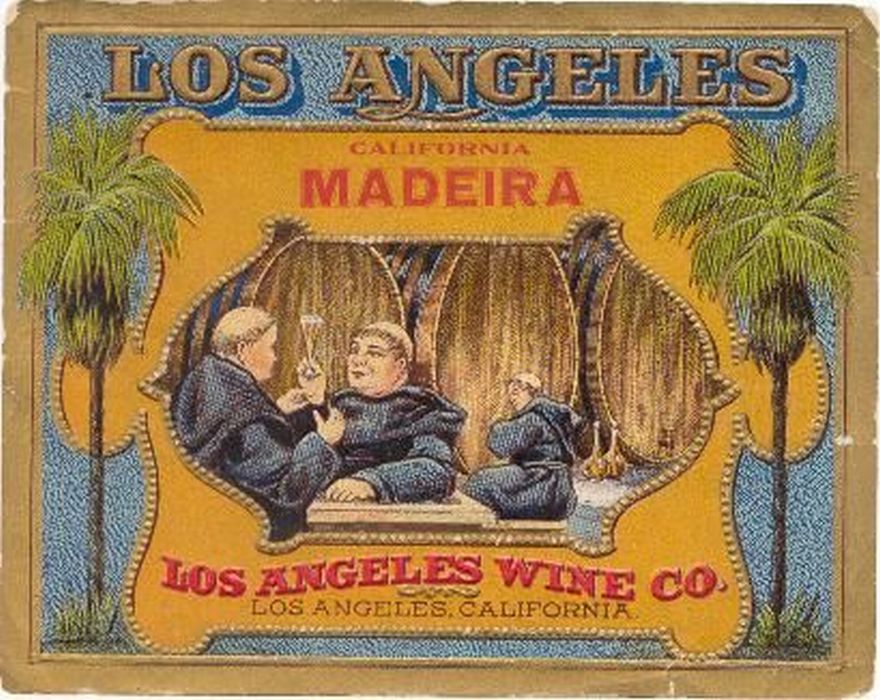
Forged California Madeira of the LA Wine Co. Picture shown with the friendly permission of Eleni Camperos
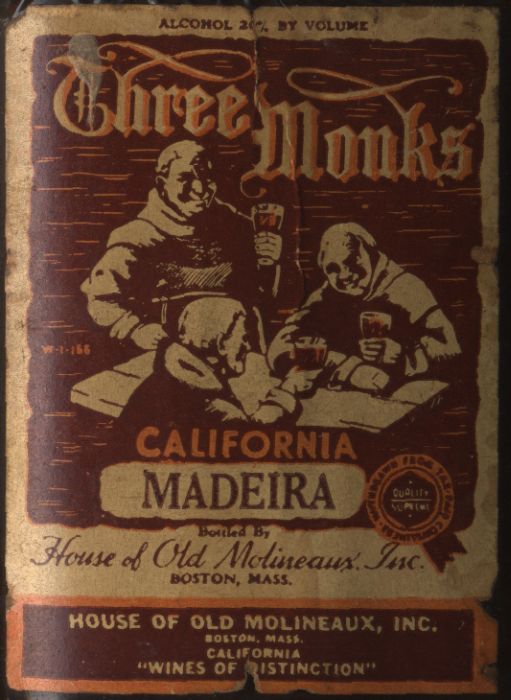
Forged Three Monks California Madeira (miniature)
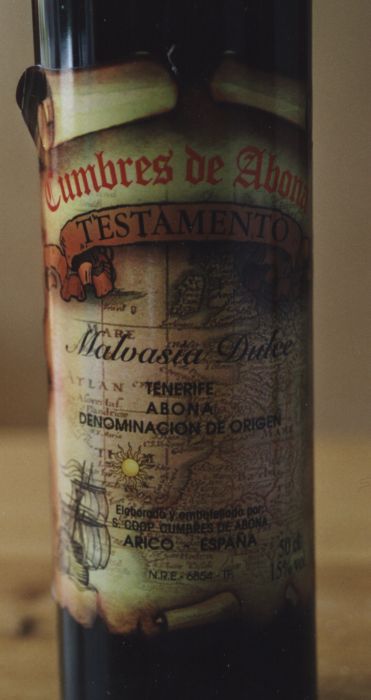
1997 Malvasia of Tenerife, Canary islands, bottled under its own Denomination de Origin
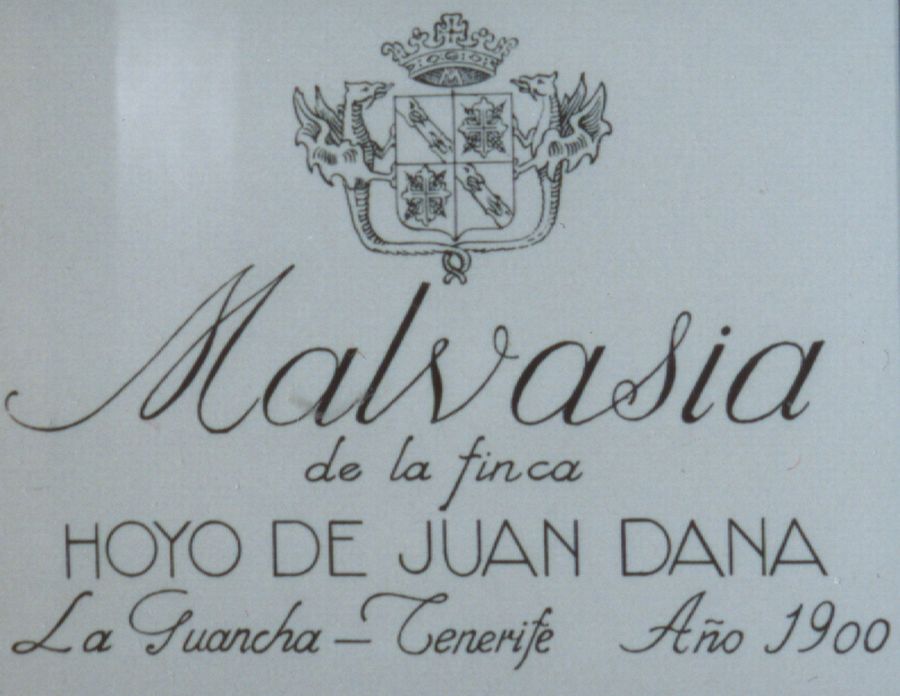
1900 Malvasia of Tenerife, Canary islands
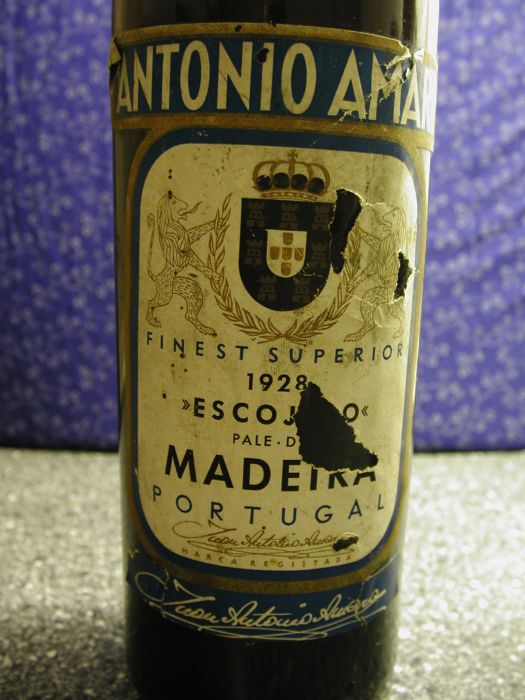
Forged Spanish Madeira of 1928

You must be logged in to post a comment.